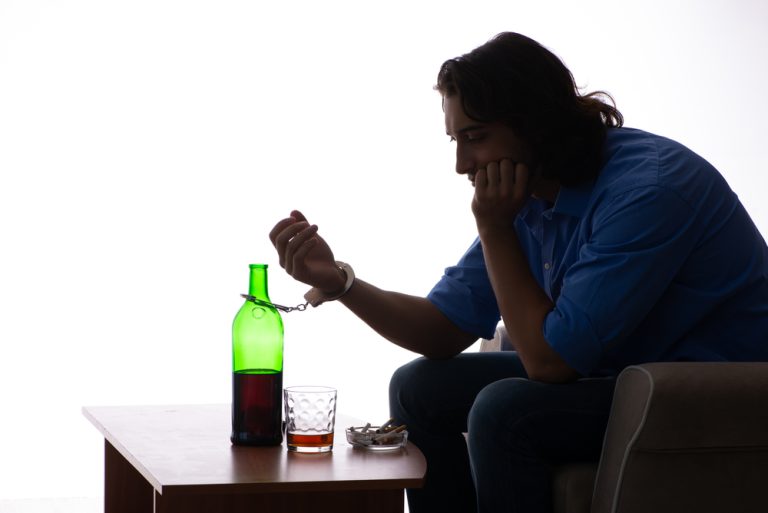Dishonorable or Bad Conduct discharges leave https://giaoxubalang.com/when-youve-had-too-much-hangover-symptoms-and/ the troubled veterans unlikely to even obtain VA medical care for their war wounds, let alone a decent job. Breaking the cycle of Alcohol Usage Disorders and PTSD requires acknowledging the problem and seeking help. By shedding light on the hidden link between Alcohol Usage Disorders and PTSD, we can guide individuals towards healthier choices and a brighter future.
2. Proposed diagnostic criterion for PTSD with secondary psychotic features (PTSD-SP)
You might see a psychiatrist, psychologist, or psychiatric social worker. They will want to know about any severely troubling events you’ve had in the past. If you have a dissociative heroin addiction disorder, for example, you may keep your symptoms hidden or explain them another way.
Michigan Psychological Association
Many people can continue to feel emotionally detached in everyday life, even well after they’ve survived a traumatic event. Alcohol-induced derealization and depersonalization are multifaceted issues rooted in neurochemistry, mental health, and behavioral patterns. Recognizing the interplay between alcohol use and dissociation is the first step toward reclaiming a grounded, authentic sense of self.
Treatments for PTSD

The Treatment of ptsd and alcohol abuse Patients with Dissociative Disorders (TOPDD) Studies are currently the largest body of research concerning the most effective interventions for DDs. The TOPDD Studies are comprised of naturalistic studies with DD experts and patients, efficacy studies of a web-based educational program for DD patients and their treatment providers, and expert surveys about DD treatment interventions. Dissociative symptomatology mediates the relation between posttraumatic stress disorder severity and alcohol-related problems.
What Are the Effects of Alcohol as a Dissociative?
Two days before this incident, he had “cold turkey” discontinued the antidepressant Gabapentin (Neurontin), because it was causing him to be drowsy during the day while on duty. For all the criticism, the Department of Defense and VA are advancing in identification, diagnosis, and treatment. With such an incredible rate of veterans returning from multiple deployments, the stigma is being removed. Nevertheless, the identification and treatment gaps exist and incidents happen.
Psychologists, while critical to psychotherapy and treatment analyses, are not medical doctors who prescribe or deal with medication management. However, the hospital may not even know what the case entails, because no one adequately informed them beforehand. In presenting this type of evidence to the court, the Defense team is entitled to present their own mental health expert(s) and lay witnesses to the veteran’s PTSD and behavior, just as in the affirmative “lack of mental responsibility” defense. I will briefly discuss the sanity inquiry, procedural, and disclosure requirements that come with either of these defenses. While these states are not a built-in excuse in every case involving a combat veteran with PTSD, these underlying conditions do emerge and certainly result in unintended criminal incidents in severe cases.
- On the other hand, fellow Marines or soldiers may observe hypervigilance in the sense that everything is perceived as a critical threat.
- They experience many life-altering events, such as high-stress environments, severe injuries, violence, sexual trauma, and death.
- Hamner et al. (1999) and Braakman et al. (2008) suggested that the positive symptoms of delusions and hallucinations should be present (Braakman et al., 2008; Hamner et al., 1999).
The primitive parts of your brain physically take over- in measurable ways. The higher the degree of atrophy, the more likely, frequent, and severe dissociative symptoms become in the individual positive for that subtype. While in the throes of dissociation, the mind reverts to the original traumatic combat stress, with all attendant sensations, terror, and emotions. The body is a passenger as the mind reverts to “fight, freeze or flight” mode.
Emotion dysregulation

They need professional intervention and a support network to feel safe enough to heal. Researchers formulated the chemical dissociation hypothesis in the early 90s after conducting interviews with adult survivors of childhood sexual abuse. While this hypothesis initially served as the primary explanation for the relationship between dissociation and addiction, further studies found certain aspects of this hypothesis lacking.

The Recovery Village Atlanta
TBI has symptoms of mental confusion, dizziness, double vision, tired eyes, slurred speech, loss of coordination, numbness in extremities, confusion, vomiting, and dilated pupils. In severe or repeated TBI, the symptoms can persist years after the physical trauma. Sometimes this antidepressant discontinuation syndrome can look like drunkenness. In a 2013 case, I defended a senior enlisted Marine Purple Heart recipient who had an incident at a charity fundraiser in bar. He was charged with, among other things, drunken and disorderly conduct, criminal threats, and assault. Despite his apparent “drunken” stumbling, erratic behavior, and slurred speech, evidence showed that he had very little alcohol that night.
That’s why our programs are founded and staffed by people in recovery – people who truly understand. Verify your insurance today – treatment could be more affordable than you think. Researchers are working to include studies with female participants with AUD.
In the 2019, population worldwide began to struggle from a new threat to physical health that is the outbreak of the coronavirus disease (COVID-19). In addition to the medical, economic, and social costs induced by the outbreak, experts from the field of mental health early stressed the potential wide range of psychological negative impacts caused by the set of events related to this situation 1-3. Within the complexity and the heterogeneity of environmental changes that individuals experienced in response to the outbreak, some specific factors have been pointed out as potentially stressful and deleterious for the psychological functioning. For instance, “stayat-home” measures adopted by several countries have been likely to increase loneliness levels 4,5.